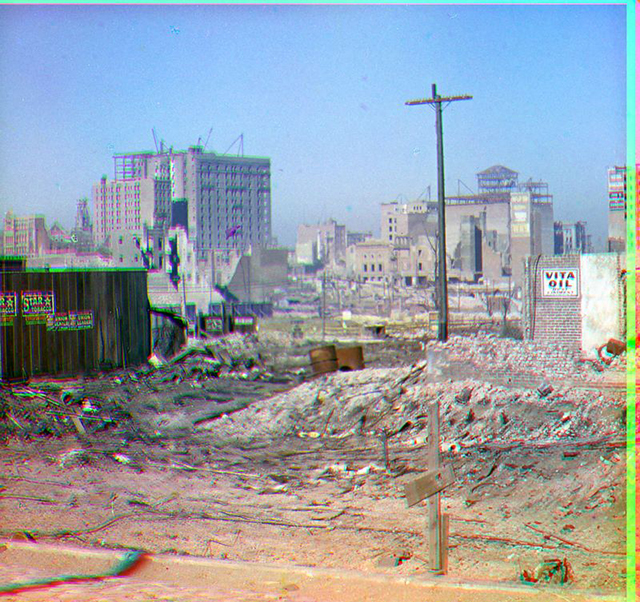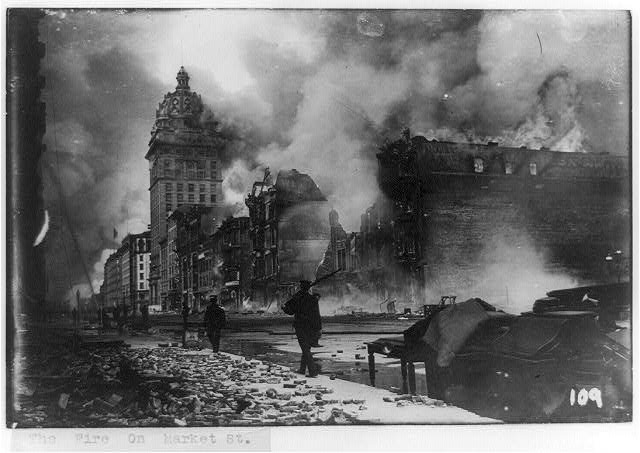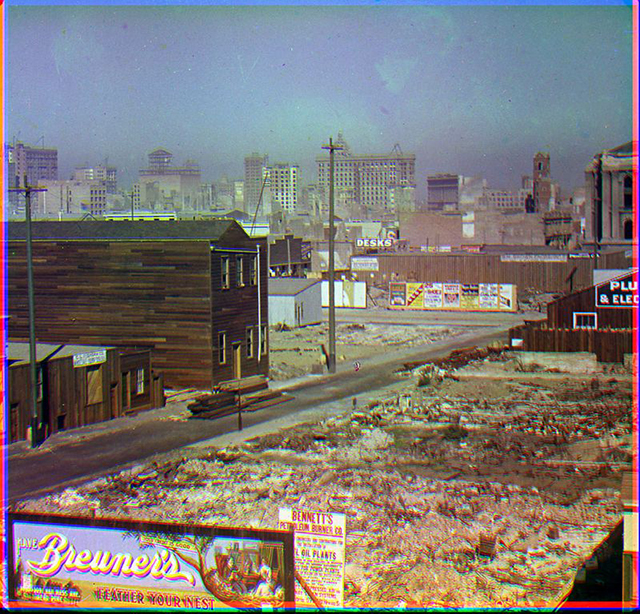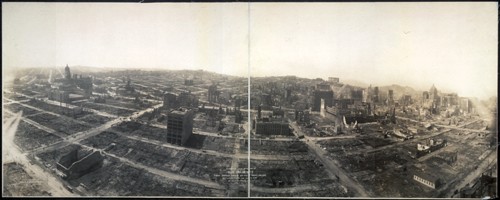The shaking started at 5:12 a.m. the morning of April 18, 1906 -- 108 years ago today. The 7.8-magnitude earthquake destroyed more than 80 percent of San Francisco and killed about 3,000 people.

Photographer Frederick Eugene Ives captured the destruction in color photographs, using an apparatus called a Krőmgram. According to the Smithsonian, Ives' Photochromoscope system required "precise alignment and careful adjustment of the lighting to obtain a satisfactory color image."

In the days following the quake, devastating fires broke out throughout the city, dramatically adding to the damage, death and destruction caused. Estimates claim that 90 percent of the total destruction resulted from the fires.

San Francisco's City Hall, located two blocks from where the current City Hall stands today, was destroyed, along with the Hall of Records. The old City Hall was bounded by Larkin and McAllister streets, largely where the Main Library and U.N. Plaza are located today.


In 1906, San Francisco's population was around 410,000-- the ninth-largest city in the United States. The fires that followed the quake left a huge portion of that population homeless.

At the time, only 375 deaths were reported. Estimates today top 3,000 lives lost. Hundreds of fatalities in Chinatown went unrecorded.

The Library of Congress has many more photographs of the destruction.

